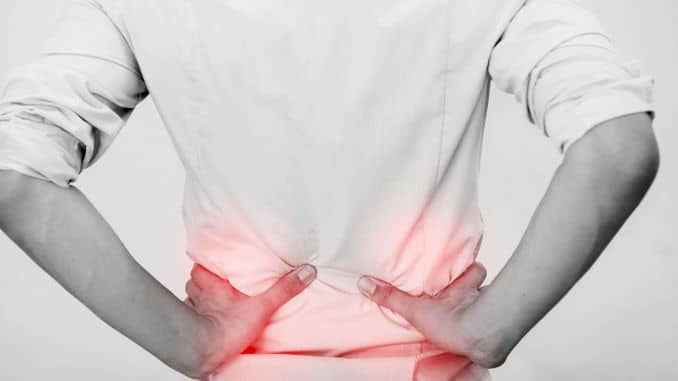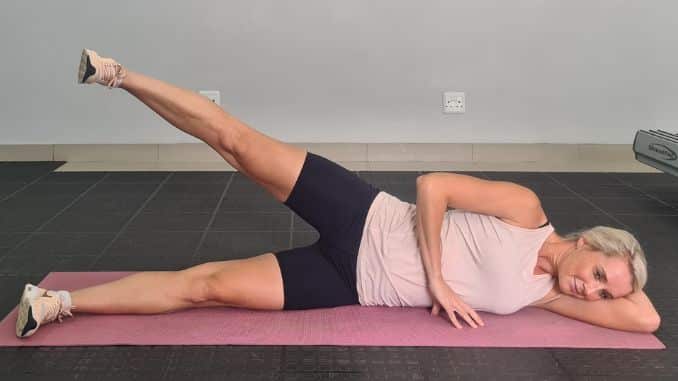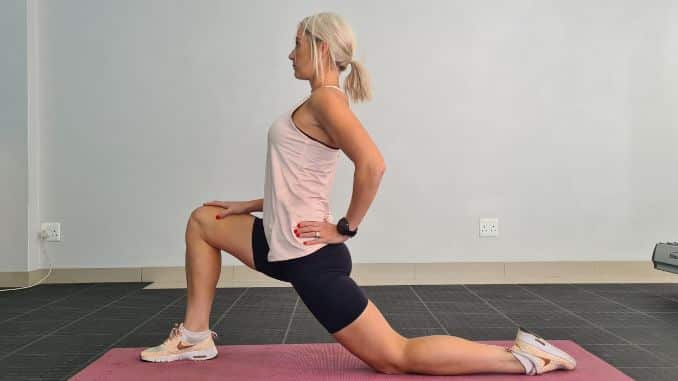
What Is Hip Tendonitis?
Hip tendonitis refers to the painful inflammation of the tendon of the hips, specifically the tendon of the hip flexor muscles, which is why it’s also known as hip flexor tendonitis or tendinitis of the hip. Let us dive into this article to learn more about Hip tendonitis as well as some Hip Tendonitis Exercises.
Hip tendonitis develops when the tendon becomes stressed through repetitive muscle contractions that result in micro-tearing of the muscle-tendon fibers. Over time, these micro-tears will result in pain and inflammation of the affected tendons. It is a common injury among athletes, especially those involved in sports such as running, cycling, dancing, swimming, and other high-impact sports, exercises, and activities. Aside from the hip flexors, other areas of the body can also develop tendonitis, such as the common tendon of the wrist extensors (tennis elbow), common tendon of the wrist flexors (golfer’s elbow), Achilles tendon (Achilles tendonitis), patellar tendon (jumper’s knee) and tendons of the thumb (De Quervain’s tenosynovitis).
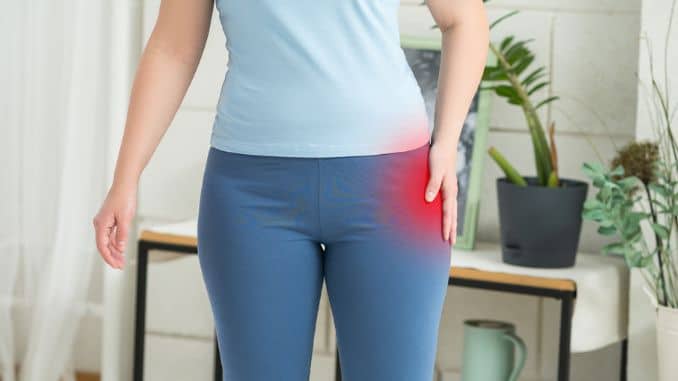
What Causes Hip Tendonitis?
Hip tendonitis most commonly occurs in the hip flexors. Primarily, the hip flexors refer to the iliopsoas muscle, a group of muscles that consists of the iliacus, psoas major, and minor. The iliopsoas muscle originates in the pelvis and vertebrae of the lower spine and is attached to the thigh bone or top of the femur.
Together, this group of muscles acts to flex the hip by bringing your leg closer to the front of your body, such as when lifting your leg to step up on a stair or jumping. Aside from this, it also helps stabilize your torso when you’re standing on one or both feet and helps you raise your body from a lying position. Hip Tendonitis Exercises are a great help.
There are several possible causes of hip tendonitis. This includes:
1. Overuse Injuries
Repetitive physical activities cause stress on this tendon. Usually, movements that keep lifting the legs, such as when stepping, running, kicking, and jumping, become irritated and inflamed, which results in pain and inflammation. Over time, it can develop into hip tendonitis.
2. Poor Biomechanics
Another cause of hip tendonitis is hip replacement. Hip replacement is a surgical procedure that replaces your worn-out hip joint with artificial ones to address hip pain and other symptoms. Now due to the altered joint movement and muscle activation patterns after surgery, it can cause more stress on the tendon and become irritated, which results in tendonitis.
3. Muscle Imbalances
Imbalances in the muscles around the hip joint can pull the joints out of position. Because of this, it strains the joint itself, which can cause irritation, inflammation, and pain. This could develop into hip tendonitis over time.
4. Trauma Or Injury
Dislocations, fractures, or direct blows to the hip and other accidents can irritate and develop into tendonitis over time. It can cause pain, swelling and inflammation, and limitation of range of motion as well.
What Are The Symptoms Of Hip Tendonitis?
Symptoms include deep dull aching pain and stiffness in front of the hip joint that worsens with physical activity and limitation of range of motion. It also includes tenderness or swelling around the affected area, especially in front of the hip, difficulty walking and performing activities that involve the hip joint, low back pain, and the altered posture that causes the pelvis to rotate forward and exaggerate curves in the lower back.
How To Diagnose Hip Tendonitis?
The doctor conducts a complete physical examination when diagnosing hip tendonitis. This includes evaluating the patient’s medical history, assessing their range of motion, and examining hip joint stability and flexibility. Imaging tests like X-rays or MRI scans may carry out to further evaluate the severity of the tendonitis. Additionally, blood tests may be conducted to eliminate other medical conditions that may be causing hip pain.
What Are The Treatments For Hip Tendonitis?
Before we go to the Hip Tendonitis Exercises, we have some treatments for hip tendonitis which includes:
-
Rest And Activity Modification
Taking a rest could give the tissues a chance to heal and prevent re-injury. Avoiding activities that worsen it can also be beneficial.
-
Medications
NSAIDs or nonsteroidal anti-inflammatory drugs may help reduce pain and inflammation.
-
Corticosteroid Injection
This is an anti-inflammatory steroid injected into the bursae that can reduce pain and inflammation.
-
Surgery
The surgery for hip tendonitis is called a tenotomy. If pain and other symptoms are not relieved by conservative treatments after three months or more, this could be recommended. This surgical procedure involves lengthening the iliopsoas tendon by making a small cut into the portion of the iliopsoas tendon to allow it to increase in length while decreasing tension as it heals back together. This surgery will temporarily reduce the strength of the iliopsoas muscle, which resolves within three to six months after surgery and recovery with proper management.
How To Prevent Hip Tendonitis?
Fortunately, Hip tendonitis can be prevented in several ways.
Here are some ways to prevent it:
A. Proper Warm-Up And Cool-Down Routines
It is recommended to perform proper warm-up and cool-down routines before and after your exercise regimen to prevent injuries. Stretching before and after your workout can prepare your muscles, tendons, and other body structures for strenuous activities, minimizing the risk of injury.
B. Gradually Increase Intensity And Duration Of Physical Activity
To avoid sudden stress on the muscles and joints of the hips, gradually increase the repetitions, sets, intensity, duration, and other factors during physical activity.
C. Wearing Proper Footwear
Wearing proper footwear designed for physical activity reduces joint pressure. Additionally, it can enhance your posture during exercise and minimize the risk of injury.
Hip Tendonitis Exercises
Hip Tendonitis Exercises can help relieve pain by strengthening the muscles, providing more support to your hip joint, and improving your range of motion.
1. Isometric Hip Press
Lie on your back with your knees bent and feet flat on the floor. Then, place a belt around your thighs just above your knees. Afterward, press against the belt with the outside of your legs. Lastly, hold this position for 7 seconds before relaxing and releasing the hold. Complete 10 repetitions, 1 set.
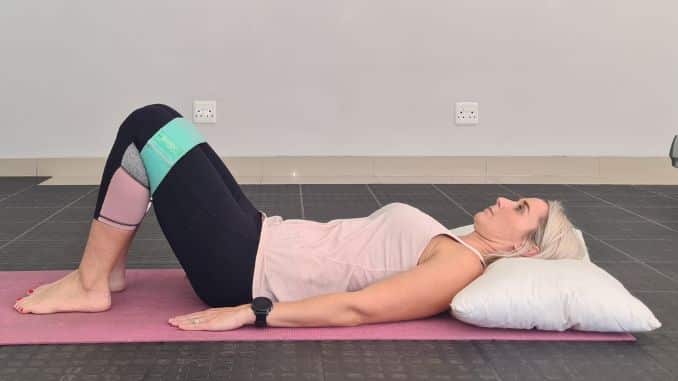 |
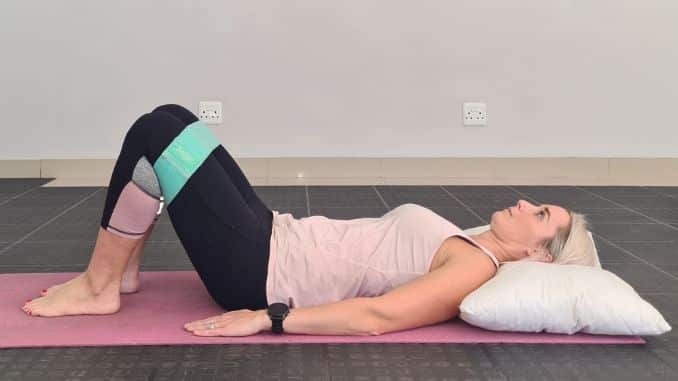 |
2. Pelvic Tilt With Marching
Lie on your back with your knees bent and feet flat on the floor. Then, press your lower back into the floor and exhale. Afterward, slowly raise one leg up while your knees are bent as if you are marching. And then, hold this position for 7 seconds before returning it to the starting position. Now repeat the procedure on your opposite leg. Lastly, keep alternating between the legs to keep marching. Complete 10 repetitions, 1 set.
3. Glute Bridges
Lie on your back with your knees bent and feet flat on the floor. Then, push through your heels and engage your gluteal muscles to raise your hips off the floor until your body is aligned from shoulders to knees. Finally, hold this position for 7 seconds before relaxing and putting your hips back on the floor to return to the starting position. Complete 10 repetitions, 1 set.
 |
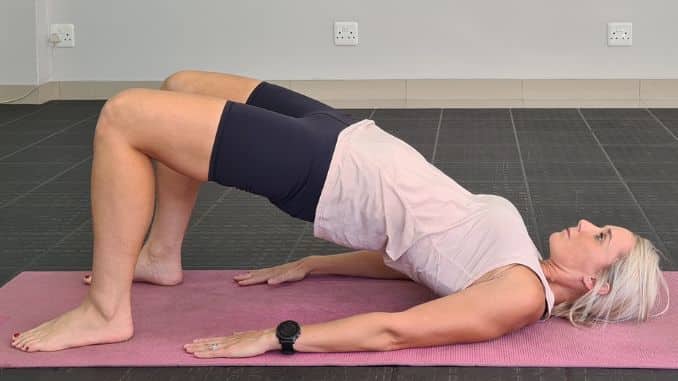 |
4. Lying Lateral Leg Raises
For this Hip Tendonitis Exercises, lie on your right side. Prop yourself using your right elbow with your forearm flat on the floor. Slightly bend your knees. Then, raise your left leg up. Hold this position for 7 seconds before putting it back down to return to the starting position. Finally, complete 10 repetitions, 1 set. Repeat on the opposite leg by lying on your opposite side.
5. Hip Flexor Stretch
Kneel on one leg and place the other foot forward with your knee bent at 90 degrees. Then, make sure to keep your back straight and place your arms on your hips. Engage your glutes and push your hips forward with your body until you feel a gentle stretch on your hips. Hold this position for 30 seconds before returning your hips backward to the starting position. Lastly, complete 10 repetitions, 1 set. Repeat on the opposite side.
Outlook
Hip tendonitis can often be successfully treated with conservative treatments. However, surgery may be required for chronic and severe cases of hip tendonitis. Recovery and postsurgical prognosis for this is usually great. Consult your doctor for the best course of treatment.
Reduce Pain, Promote Weight Loss, Enhance Your Strength Training, And Increase Energy by Unlocking Your Hip Flexors! Check it out now!

